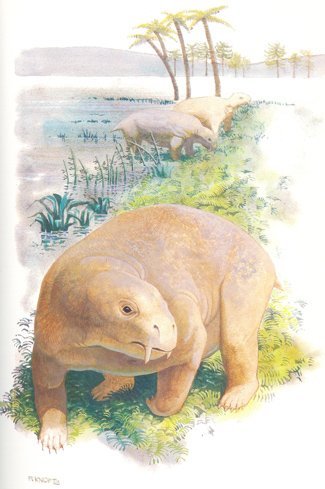Giant mammal ancestor found in Tasmania

IT SURVIVED A GREATER disaster than the one that wiped out the dinosaurs and points to how life evolved after the extinctions.
Fossils found in Tasmania have scientists convinced the dicynodont, considered a distant ancestor of mammals, once roamed Australia and survived the Great Extinction.
The 250 million-year-old remains of the ‘mammal-like reptile’ were discovered by a nature-loving Hobart couple out on a walk.
The bull-sized creature, which scientists say had 10cm-long tusks and somewhat resembled a giant wombat, lived through an event sometimes called the Great Dying between the Permian and Triassic periods.
The disaster wiped out 90 per cent of land-based life and 70 per cent of that in the seas. The dicynodont pre-dated dinosaurs by 30 million years and became extinct around 20 million years ago.
“Everyone knows about the dinosaur extinction event, but that was a real minor feature compared to this extinction,” says Dr Stuart Bull, a sedimentologist from the University of Tasmania. “These are survivors. They survived that extinction event.”
Surviving the dinosaur extinction
The cause of the catastrophe is hotly debated by scientists, with the usual suspects – meteor strikes, climate change and solar flares – among the possibilities.
“The current view is it might have been due to massive volcanic eruptions in the Siberian plate,” says Dr Andrew Rozefelds from the Queensland Museum.
They say the two skull pieces found by Bob and Penny Tyson are significant because they will help show how life evolved after the wave of extinctions.
The dicynodont may also have lived longer in Australia than on other continents, Andrew says.
“Australia is an island continent and maybe some things like the monotremes, like the platypus and the echidna, survived here while elsewhere in the world they became extinct,” he says.
The dicynodont fossil is just the second to be found in Australia after a 1983 discovery in Queensland.
RELATED STORIES

